Planting garlic after tomatoes next year. Crop rotation in the garden. What then can be planted in the garden
Hello dear readers!
In the comments in the spring, I am often asked questions about the rules of crop rotation, that is, about what can be planted after after carrots, cabbage, tomatoes, potatoes, onions, cucumbers, etc.
Today is April 21 and I think that I am not too late with this article. The main plantings end in our zone of the Middle Volga region, as a rule, by mid-May, however, I will answer readers' questions, because many plant carrots, radishes, beets for winter storage until the end of May, or even until June 10 - 15.
In order to have good harvest, you need to know and follow a few rules. One of essential rules agricultural technology - compliance with crop rotation.
If last year you grew carrots, then this year after it, it is better to place vegetable beans, onions, and tomatoes in this area. At the same time, it is desirable that you introduce humus in the fall.
On the beds where early ripe carrots grew last year, you can place garlic, potatoes, cabbage.
Early ripe white cabbage is a good predecessor for cucumber, garlic, onion and tomato.
Late-ripening white cabbage vacates the area very late (after frost), not all gardeners have time to dig the soil before winter after harvesting, so in the spring it is necessary to dig the site and prepare it for sowing or planting the main crop. Therefore, this crop must be a late planted or late planted crop. These are peppers, tomatoes, eggplant, pumpkin, zucchini. cucumbers, beans, vegetable corn.
After potatoes, it will be necessary to level the area very carefully. Usually cultivated late-ripening potatoes. Potatoes are the best predecessor for onions and root crops. After potatoes, tomatoes, eggplants and peppers should not be planted.
Tomatoes are a good predecessor for radishes, lettuce, dill, vegetable corn, and onions. If no viral diseases are observed, then cucumbers, squash, zucchini can be placed after the tomato.
Cucumbers are a crop in which the bulk of the roots are in the upper, 20 - 25 cm soil layer. Therefore, after them, I recommend placing cultures with a deeply penetrating root system. These are crops such as table beets, carrots (if there is a site clean from weeds), potatoes, tomatoes (if there are no viral diseases), cabbage.
After the onion, which was planted on the turnip last year, cucumbers, tomatoes, cabbage, vegetable peas, and corn can be placed. In extreme cases, you can plant table roots.
I hope my answer to the question what can be planted after in the spring in the garden, will help you during the planning of planting sites for the main crops.
Subscribe to site updates. In the near future, interesting new articles and interviews with experienced gardeners and gardeners are planned to be released. See you soon, dear friends!
Would you like to receive new articles by email? Enter your Email
ayatskov1.ru
What to plant after onions?
What to plant after onions? This question is often asked by gardeners and gardeners. After all, planting onions in one place for several years in a row is not recommended.
Briefly about soil fatigue
Each crop consumes certain substances from the soil. If a long time grow one crop in the garden, this will lead to soil depletion. Potatoes and cabbage, for example, consume potassium and nitrogen, cabbage - in addition, also phosphorus. Tomatoes also love phosphorus. Therefore, even a two-year planting of a crop in a row in one place, even with the application of fertilizers, often leads to a deterioration in the condition of the soil. The soil becomes unsuitable for cultivation.
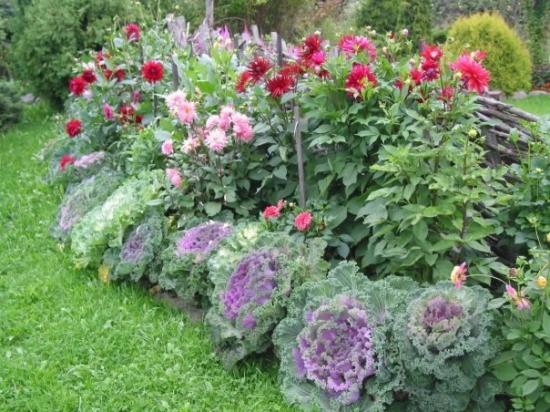
In addition, pathogenic bacteria accumulate in the soil, as well as pest larvae that specialize in this plant. For example, late blight spores, when they enter the soil, will be viable for several years. Sowing crops in this place that are susceptible to phytophthora serves to stimulate soil contamination. It is very important to establish an adequate and correct circulation of crops in your garden.
Still cultures influence each other with their root and leaf secretions, or phytoncides. They can have both positive (stimulate growth) and negative (suppress development) effects. For example, if you plant rye in a garden for two years, then you will get rid of this for a long time. malicious weed like a wheatgrass. Conversely, planting celery with cabbage perfectly protects the latter from whites.
The accumulation of plant residues in the soil strongly affects the growth of subsequent plantings during one season, and after winter, of course, this influence is significantly weakened. The same effect is obtained with mixed cultivation of vegetables and herbs.
crop rotation
It is advisable to draw up a garden plan and keep records of planting crops. The crop rotation rules are simple. It is impossible to plant cultures of one species, family in one place, as they are subject to the same pests. cultures with early landing do not plant after crops that require late harvesting. This is due to the fact that in a short period of time recovery did not occur in the soil. It is not recommended to plant crops with the same mineral composition in one place.

It makes sense to alternate crops not only for a full annual crop rotation cycle, but also to find crops that have a short development period and can be sown in the same year after harvest.
So, after picking onions, it’s good to sow lettuce, spinach, chinese cabbage, and in September - radish. Radish just does not like the time of the "long day" and will have time to give new harvest. And lettuce and spinach are very peaceful crops that do not cause soil fatigue.
If the onion bed is large, a lot of crops have been harvested, and radishes and lettuce are not needed in large quantities, then you still should not leave the bed bare, “without work”. Sow then some green manure or annual flowers. They will perfectly protect the garden from sun rays and will structure the soil. You can even scatter all the seeds that are left in the store and are unlikely to be in demand.
If next year it is planned to sow cruciferous plants on this bed, then in August sow phacelia, rye, and oats. And if you want to take a garden for tomatoes or pumpkin crops, then feel free to sow cruciferous. Nothing so disinfects the soil from root rot as rapeseed, oil radish and mustard.
You can sow green manure randomly, you can not choose the remains of onion roots, they will perfectly pereper until spring. From above, green fertilizer seeds can be powdered with a mixture of peat and sand or mature compost.
Combined garden planning
Gardeners always want to get big returns from a small area. And this is good, since the sun will burn the earth for less time, and we will have to cultivate a smaller area.
It has been noticed that the greater the variety in the garden, the more resistant it is to pests and diseases.
And this is understandable, because in order to find their “bread”, the pest will have to sniff for a long time, and there are many smells, and many smells are very repellent. For the benefits of combining onions and carrots to keep flies away, see here.
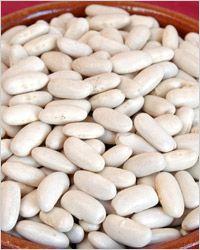
Planting beans, parsley, lemon balm, catnip, savory, hyssop, yarrow protect against pests in the garden. No need to plant them in a continuous strip, enough in different parts stick scattered bushes. Remember that mono landings are more vulnerable.
Cultures of the same height and fluffiness do not coexist together if they are planted closely. Plants of the same family also do not get along, since they consume the same elements, and identical substances are released into the soil.
So, planting planning after onions can be not only annual, but also within one season. If you try to combine plantings, then less labor will be required to care for the garden area, fewer pests will find their "goodies".
OgorodSadovod.com
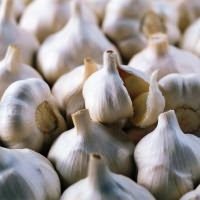
Garlic is a herbaceous perennial crop that is grown everywhere in our latitudes. On any suburban area there will always be a place allocated for its cultivation. Planting and caring for this crop are not difficult, but there are a number of rules, the observance of which can significantly increase the yield of garlic.
First, the quality of the soil. A high yield can be obtained on sandy and loamy soil with a neutral level of acidity. But if the soil in your area is characterized by high acidity, then you can deoxidize it with ash, slaked lime, "fluff" or ordinary chalk. Secondly, garlic prefers open areas with good lighting. Thirdly, before planting garlic, you need to take care of preparing the beds in advance. And this should be given special attention.
The need for fruit change
Each crop that is grown on a particular piece of land needs a number of chemical substances and their compounds for full development and growth. Plants obtain these substances from the soil, thereby depleting it. In order for the subsequent crop to please with a high yield, you need to know whether it can be planted or if it should be delayed, and plants can be planted on the site that can restore soil fertility. In agricultural technology, this process is called fruit change. Thanks to the fruit change, one-sided depletion of the soil is excluded. In addition to strawberries, tomatoes, beans and potatoes, it is impossible to plant one crop on the same plot, otherwise the structure and quality of the land will deteriorate.
And then it is better to plant garlic so that the harvest is good? Experienced gardeners know that if you just removed the onion crop from the site (after which the land was depleted), then you can’t plant garlic! And it's not just that both of these cultures belong to the same family. Their root system is short, that is, both onions and garlic during growth deplete the same layer of earth. It is desirable that the precursors of garlic were plants with long roots. Even better if the site was previously fertilized organic fertilizers, since top dressing with fresh manure immediately before planting garlic is not recommended.
If the predecessors were affected by diseases or pests, then the earth should be disinfected, let it “rest”, after which garlic can already be planted. Special attention should be given to cleaning the site in the event of the appearance of an onion nematode. All bulbs are extremely sensitive to this pest. It is worth planting plants that are resistant to the nematode in the beds.
Choice of precursor crops
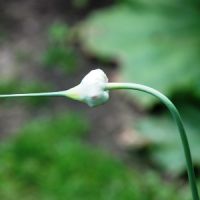
soil structure. Good predecessors also include winter crops grown for green fodder (grass, alfalfa, clover), as well as squash, zucchini. In addition, you can plant garlic after cucumbers, in the beds where berry bushes used to grow.
But after carrots, you can plant garlic only if there is no other way out. Carrots during growth deplete the earth very much, so count on a good harvest of any vegetable and fruit crops after cleaning it is not necessary. It is also not recommended to plant garlic after potatoes, any types of cabbage and legumes, sugar and table beets.
womanadvice.ru
Each gardener, both beginner and experienced, before the start of the new season, thinks over what and where he will plant. And the point here is not only in beauty and convenience, although aesthetic pleasure is not of the last importance. Another thing is important - depletion and enrichment of the soil, infection with pests, and an increase in productivity.
Consistent planting helps restore soil
The basic rule that a gardener should know is that you cannot constantly plant a plant in the same place. Any culture can be returned to its place only after a few years, during which time the earth is restored and enriched with essential trace elements and useful substances. But there are some exceptions to this rule as well. The place for planting potatoes, tomatoes, beans and strawberries can not be changed for 4-5 years.
The second rule is the change of cultures. In order for the soil to have a good rest, but not to stand idle, it is recommended to plant plants alternately with a deep, medium and superficial root system. Thus, plantings choose useful substances “in layers”, allowing the layers located above or below to fully recover.
So, for example, after tomatoes or potatoes, in which root system of medium severity, it will be good to plant root crops that take microelements from the deep layers of the soil, or crops that feed on the upper layers (cabbage, cucumbers or zucchini).
To replace the beds with garden strawberries, knowledgeable gardeners planted "deep" legumes, carrots and beets. For the next season - "superficial": zucchini, pumpkin, cucumbers. And then complete the recovery period with onions and tomatoes. After such a break, you can safely return the strawberries to their original place.
But garlic and onions are universal plants. They can be planted before any vegetables, and after any crops. However, neither onions nor garlic should be sown in the same place twice in a row.
And third. Areas where crops were sick and prone to pest infestation should be planted with plants that are resistant to these diseases or sanitize the soil. As a rule, related species, such as potatoes and tomatoes, cucumbers and zucchini, are prone to the same damage.
What is next to what is better to plant
Some plants are appropriate to plant not only after each other, but also in the neighborhood. They are not antagonists, and on the contrary, they have a beneficial effect on each other.
Raspberries go well with cherries. Raspberry and apple tree mutually heal each other, preventing the appearance of scab and gray rot.
Grapes are favored by the neighborhood of radish and radish. Parsley acts as a natural nurse on grape plantings, protecting it from phylloxera damage. garden plots, where ant colonies live, it is recommended to plant parsley - it repels annoying small insects.
Another useful property parsley: it scares away the main enemy of strawberries - slugs. If you want to protect the future harvest, sow curly greens between bushes of berries.
Beans are planted between potato furrows, next to cucumber beds, mixed with radishes, mustard, spinach, and corn. Due to the proximity to the beans, these crops receive additional portions of the nitrogen they need. And for the beans themselves, basil, oregano, yarrow and rosemary are ideal partners - these herbs reduce the risk of bean weevil infection.
It also contributes to the enrichment of the soil with nitrogen and peas. It is ideal as a neighbor for carrots, turnips and cucumbers, which in turn stimulate the growth of juicy and sweet pods. And the tomato, which releases fintocides, is a powerful growth stimulator for peas. Enhanced growth of peas is facilitated by substances secreted by the mustard root system. In addition, mustard prevents the appearance of codling moth and suppresses the growth of weeds - it is customary to use it in combined crops.
The main enemy of cabbage is butterflies and their larvae deposited between the leaves. These insects are repelled by mint, chamomile, wormwood, thyme, sage. Smell fragrant herbs interrupts and masks the smell of ripening heads of cabbage, peculiar and attractive for cabbage girls. Protect cabbage from earthen flea various varieties lettuce, and borage herb drives away voracious snails. But celery, although it repels earthen fleas, is itself an object of desire for cabbage whites - such a partnership is unlikely to be useful. The neighborhood of cabbage with onions, dill, potatoes, radishes is quite acceptable, and being next to tomatoes, carrots and green beans is undesirable.
A favorite and indispensable vegetable in the diet of most of the inhabitants of our country - potatoes perfectly coexists next to corn, eggplant, horseradish, garlic and white cabbage. These cultures are heterogeneous and do not interfere with each other, absorbing essential trace elements and water from different soil layers. Coexistence with partner plants contributes to a high and stable yield of "second bread", reduces the risk of its disease. Moreover, with such a neighborhood, growing potatoes can not change the place for several years. He loves potatoes (both on the table and in the beds) “green” environment - dill, garlic, onions, lettuce, spinach, as well as horseradish, radish, carrots and cabbage. Horseradish bushes, most often, are planted along the perimeter of the plot allotted for potatoes. Onions and garlic, releasing large amounts of antibacterial fintocides, protect against phytophthora.
Beans planted between potato sprouts saturate the soil with nitrogen and protect the plant itself from bruchus. Bush beans protect plantings from the Colorado potato beetle. Therefore, tender eggplants grow well in her environment. Gardeners widely use the ability of beans to scare away the onion moth and often create from it " hedge» around cucumber rows, cabbage and beets.
Tomatoes are inherently "donors", they bring more benefits to nearby plants than use other people's abilities. Substances secreted by tomato greens drive away the codling moth and prevent scab in fruit trees and have positive influence on the growth of legumes, cabbage and onions.
However, the tomatoes themselves will benefit from the neighborhood with onions and garlic. These plants protect cucumbers and tomatoes well from bacterial infections, but onions do not like peas, beans, and beans. But it is combined with carrots (mutually protect each other from the fly), strawberries, lettuce, radishes and parsley.
The principle of "do no harm" in the garden
If some combinations of garden and vegetable crops complement each other, stimulating growth and protecting against pests, then other plants get along very poorly in close proximity and cause forced neighbors more harm than good.
So, legumes do not tolerate the neighborhood with Chipollino and his brethren very badly, and a flower bed with long-blooming marigolds will obviously not come in handy here.
The walnut is an absolute egoist, suppresses any plant that has fallen into its "inner circle".
Oddly enough, but peas do not like the neighborhood with beans, and also negatively perceives the environment with tomatoes or rutabagas.
For cabbage, the neighborhood with carrots, parsley and tomatoes is undesirable. Ardent antagonists are cabbage and grapes, with such coexistence both cultures suffer. Aggressive against grapes and tomatoes, and he, in turn, suffers from cucumber, beets, fruit-bearing apple trees and cabbage (cauliflower, red and white).
Potatoes do not need the company of cucumbers and tomatoes, they do not tolerate pumpkin, celery and sunflowers (except for a decrease in yield, in this case there is a high risk of late blight infection). The tubers will not be large, and the harvest will be rich if you plant potatoes next to raspberry shoots and fruit trees, in particular - apple and cherry.
It is better not to alternate gooseberry bushes and currant bushes and plant them away from each other. A disease such as gooseberry moth is easily transmitted between these plants. And the close proximity of strawberry plantations and raspberry thickets provokes the reproduction of colonies of the berry pest - the strawberry-raspberry weevil.
Fruit trees also do not all neighbor each other. Peach and apricot are best planted at the other end of the site, away from pears, apples and cherries.
At sea buckthorn garden strawberries, eggplant, pepper and tomato occur similar infections. And their close location during planting provokes the emergence and mass spread of diseases inherent in these cultures.
» The issues of the need to use crop rotation to obtain a good harvest of vegetable crops were considered. But as rightly noted in the comments to this article, rostovteplica, I did not mention the best predecessors when planting vegetables. In fact, this is an important circumstance that cannot be ignored. So what can you plant after?
Potato. The best predecessor for potatoes will be zucchini, corn, squash, beans. You can not plant potatoes after, physalis and, because these crops have common diseases. What is planted after potatoes?
Why plant carrots? Carrot grows well after potatoes, cucumbers, legumes,. Carrots grow poorly on last year's cabbage bed. What to plant after carrots?
Cabbage grows well after carrots, potatoes, cucumbers, tomatoes, onions. You can not grow after radishes, turnips and cabbage itself. What to plant after cabbage?
Eggplant grows well after early cabbage and cauliflower, legumes, cucumbers. Does not tolerate planting after peppers, tomatoes, potatoes.
Then plant beets? Beet grows well after cucumbers, onions, cabbage, tomatoes, potatoes, carrots. It cannot be grown after parsley and cannot be planted in the same place where beets were grown last year.
Then plant onion? The best predecessors for onions are early potatoes, early cabbage, greens. Cannot be grown after garlic. What to plant after onions?
radish, radish grow well after onions, cucumbers, tomatoes, early potatoes. Cannot be grown after corn and cabbage.
When can you plant tomatoes? Tomatoes grow well after cabbage, cucumbers, carrots, legumes, zucchini, pumpkin. cannot be grown after potatoes, onions, peppers, eggplants. What can be planted after a tomato?
Legumes - peas, beans, beans grow well after tomatoes, potatoes, cabbage, root crops. Cannot be grown after legumes.
After the tomato grows well garlic. Also for garlic, cucumbers, cabbage, zucchini, beans, pumpkin will be good predecessors. You can not grow after root crops - beets, potatoes. What to plant after garlic?
Strawberry(strawberry) grows best after garlic and onions. And after strawberries, it’s good to plant cabbage or green crops.
Then plant Sweet pepper? pepper grows well after cabbage, legumes, cucumbers. You can not grow after tomatoes, pumpkins and peppers. What to plant after pepper?
After pepper, green crops grow well - celery, spinach. these crops grow well after potatoes, cabbage, cucumbers, tomatoes, legumes.
Why plant zucchini? Zucchini, cucumbers, pumpkin it is good to plant after early cabbage, potatoes, legumes. You can not plant after root crops, onions, garlic. What to plant after cucumbers? After cucumbers, cabbage, eggplant, and tomatoes grow well.
What then to plant in the beds - there are a lot of rules and it is difficult to remember them, therefore, in order to simplify everything, you need to sow after harvesting - this will clear the land, it will be " green manure and will facilitate the application of crop rotation rules.
Growing vegetables and herbs in your garden for many today is both a useful and a favorite pastime. Of course, it is very important to get a good harvest from your site. Best result achieved when the crop rotation in the garden is properly adjusted.
Importance of crop rotation
If the same plants are constantly planted in one place, then their own enzymes (root secretions) poison the soil and the yield drops. So, for example, during long-term cultivation of celery, tomatoes, cucumbers, beans, cabbage in the soil, pathogens of various diseases accumulate in the soil. Therefore, crop rotation is necessary in the garden, that is, an annual change of places for growing crops on the site.
The same crops and related crops are recommended to be planted in the same places at least after three seasons. It is important to comply with this condition, because different cultures require different fertilizers. So, for example, cucumbers, cabbage, zucchini, leek, pumpkin need organic fertilizers; carrots, beets, parsley - in mineral; onions, garlic, herbs, tomatoes - both in minerals and in organic matter.
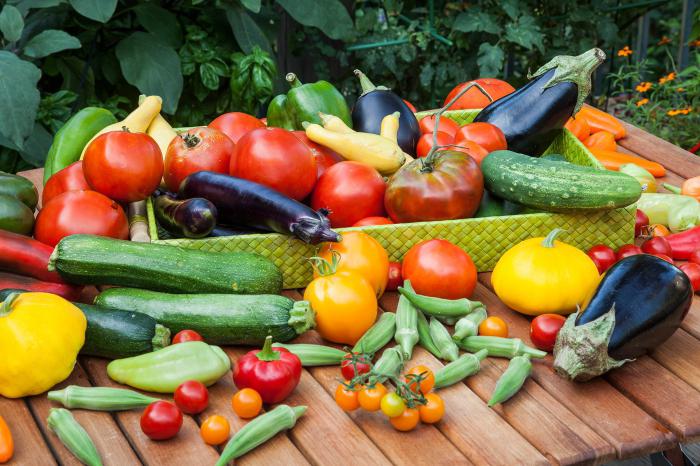
Benefits of crop rotation
The alternation of crops in the garden allows you to:
- reduce the impact of pests and pathogens that have accumulated in the soil, especially dangerous for the past crop and less dangerous for the next;
- improve consumption nutrients from the soil by plants;
- more rational use of mineral and organic fertilizers, taking into account their effect and aftereffect on different crops;
- avoid negative phenomena that are caused by root secretions of this plant species;
- carry out deep digging gradually (only for crops that need deep loosening of the soil).
Organization of crop rotation
In order to organize in the garden and not get confused in the planting sites, the following solution is often suggested. The entire garden is conditionally divided into four zones (although three are possible). We plant crops in groups. The first group is vegetables that need organic matter. The second group - vegetables that need mineral fertilizers. The third group is vegetables, for which both organics and minerals are important. And the fourth group is potatoes.
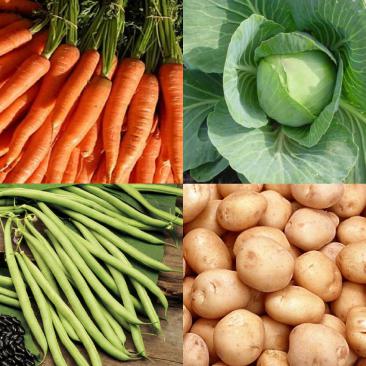
For the next season, you need to choose such places for planting so that the previous crops are suitable for them:
- Legumes - cabbage, potatoes, root crops, tomatoes.
- Potatoes - legumes and early cabbage.
- Cabbage - root vegetables, legumes, tomatoes, potatoes.
- Tomatoes, peppers - legumes, root vegetables, cabbage.
- Onion - potatoes, pumpkin, root vegetables, legumes.
- Root crops - potatoes, tomatoes, early cabbage.
- Greens - legumes, cabbage, potatoes, pumpkin.
- Cucumbers and pumpkins - root crops, early cabbage, tomatoes, potatoes.
You also need to know invalid predecessors. For example, do not fit:
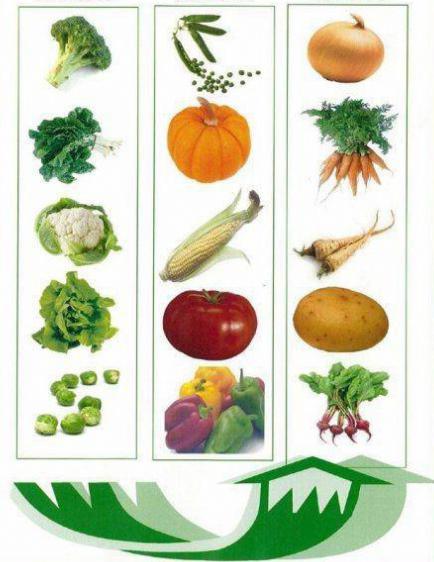
How to increase productivity
Observing certain rules of crop rotation in the garden, on one piece of land you can get two crops a year. For example, before planting peppers, tomatoes, eggplant, you can spinach, lettuce. After cabbage, broccoli, cauliflower, sow turnips and radishes. After early potatoes, plant kohlrabi, colored radishes, lettuce, peppers, and spinach grow well after peas.
Between the rows of slow-growing vegetables, you can plant fast-growing ones. For example, between the rows of carrots, beets, celery, you can grow lettuce, radishes, spinach, green onion. Radish and lettuce can also be grown between rows of cabbage (early and late). Greenery grows well along the edges of the beds.
It is useful to grow more thermophilic plants (cucumbers, peppers, eggplants) among taller ones (tomatoes, peas, corn). 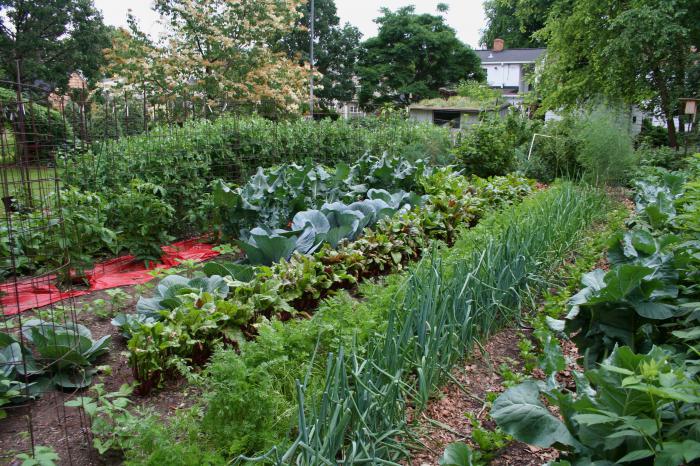
J. Seymour's Rules
- If potatoes were planted on heavy, damp soils, then other root crops can be grown there in the third or fourth year.
- Legumes love well-calcified soil, which potatoes do not like. Therefore, it is better not to plant potatoes after legumes.
- Cabbage lime is loved, but not fresh. They are best planted after legumes.
- Radishes, lettuces, cucumbers, tomatoes, zucchini love rotted manure and compost. After them, it is good to grow root crops.
- In some places, you can constantly plant greens (spinach, dill).
Rotation table
So, to make it easier to organize crop rotation in the garden, the crop rotation table will provide information in a more visual form.
| culture | Predecessors | ||
| Best | Permissible | Bad | |
| Cabbage varieties of medium and late | Legumes, cucumber, carrots, early potatoes | - | Beets, cabbage |
| Beet | Cucumber, greens, green manure, potatoes | Tomatoes, onions, carrots, cauliflower and cabbage | |
| Cauliflower and early varieties | Legumes, onion, cucumber, green manure | Tomatoes, carrots | Root vegetables, cabbage |
| Cucumber, zucchini, patisson, pumpkin, zucchini | Onion, cabbage of early and medium varieties, cauliflower, garlic, legumes | Potato, beetroot, cucumber, greens | Tomatoes, carrots, late cabbage |
| Tomatoes | Turnips, cucumbers, greens, green manure, cauliflower | Average and late cabbage, beets, onions | Potatoes, tomatoes |
| Onion garlic | Cucumber, potatoes, legumes, cauliflower and cabbage | Tomatoes, beets, onions, late cabbage | Carrots, greens |
| Potato | Legumes, cauliflower and cabbage, cucumbers, green manure | Greens, cabbage, carrots, beets | Potatoes, tomatoes |
| Legumes | All varieties of cabbage, potatoes, onions, garlic, cucumbers | Tomatoes, greens, table root crops, green manure | Legumes |
| Greens | Legumes, cauliflower and cabbage, onions, cucumbers, green manure | Potatoes, tomatoes, greens, beets | late cabbage, carrots |
"Conveyor" of vegetables
The so-called vegetable conveyor is very convenient for the constant supply of fresh herbs and vegetables to the table. This conveyor begins when we plant greenery in the garden in the spring. Crop rotation in this case helps to achieve the best results.
The sequence of receipt on the table of greens, vegetables, root crops:
- In spring: perennial parsley feathers, Jerusalem artichoke tubers left for the winter.
- A little later: sorrel, young nettle, rhubarb, onion feather, planted at the end of April.
- Then: dill and radish.
- From the end of May to the beginning of June: salad mustard, spinach, seedling-grown kale, basil, coriander.
- In mid-June: early tomatoes and cucumbers, beets, bunch carrots.
- End of June: seedling-grown cauliflower and early cabbage.
- July: tomatoes, cucumbers, cabbage, beets, zucchini, carrots, broccoli, early potatoes.
- August: patissons, legumes, corn, turnips, pumpkins, eggplants, Bell pepper.
- Autumn and winter: celery (potted), chives, watercress, lettuce alfalfa, home-grown mustard.
Given all the advantages of this approach, it is worth remembering about creativity when organizing landings. Crop rotation in the garden will help with this, but you need to apply it according to your needs, capabilities and desires.
Each gardener, both beginner and experienced, before the start of the new season, thinks over what and where he will plant. And the point here is not only in beauty and convenience, although aesthetic pleasure is not of the last importance. Another thing is important - depletion and enrichment of the soil, infection with pests, and an increase in productivity.
Consistent planting helps restore soil
The basic rule that a gardener should know is that you cannot constantly plant a plant in the same place. Any culture can be returned to its place only after a few years, during which time the earth is restored and enriched with essential trace elements and useful substances. But there are some exceptions to this rule as well. The place for planting potatoes, tomatoes, beans and strawberries can not be changed for 4-5 years.
The second rule is the change of cultures. In order for the soil to have a good rest, but not to stand idle, it is recommended to plant plants alternately with a deep, medium and superficial root system. Thus, plantings choose useful substances “in layers”, allowing the layers located above or below to fully recover.
So, for example, after tomatoes or potatoes, which have a medium-pronounced root system, it will be good to plant root crops that take microelements from the deep layers of the soil, or crops that feed in the upper layers (cabbage, cucumbers or zucchini).
To replace beds with garden strawberries, knowledgeable gardeners plant "deep" legumes, carrots and beets. For the next season - "superficial": zucchini, pumpkin, cucumbers. And then complete the recovery period with onions and tomatoes. After such a break, you can safely return the strawberries to their original place.
But garlic and onions are universal plants. They can be planted before any vegetables, and after any crops. However, neither onions nor garlic should be sown in the same place twice in a row.
And third. Areas where crops were sick and prone to pest infestation should be planted with plants that are resistant to these diseases or sanitize the soil. As a rule, related species, such as potatoes and tomatoes, cucumbers and zucchini, are prone to the same damage.
What is next to what is better to plant
Some plants are appropriate to plant not only after each other, but also in the neighborhood. They are not antagonists, and on the contrary, they have a beneficial effect on each other.
Raspberries go well with cherries. Raspberry and apple tree mutually heal each other, preventing the appearance of scab and gray rot. 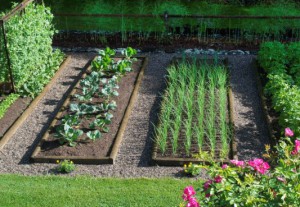
Grapes are favored by the neighborhood of radish and radish. Parsley acts as a natural nurse on grape plantings, protecting it from phylloxera damage. Garden areas where ant colonies live are recommended to be planted with parsley - it repels annoying small insects.
Another useful property of parsley: it repels the main enemy of strawberries - slugs. Want to protect the future harvest - sow curly greens between bushes of berries.
Beans are planted between potato furrows, next to cucumber beds, mixed with radishes, mustard, spinach, and corn. Due to the proximity to the beans, these crops receive additional portions of the nitrogen they need. And for the beans themselves, basil, oregano, yarrow and rosemary will be ideal partners - these herbs reduce the risk of bean weevil infection.
It also contributes to the enrichment of the soil with nitrogen and peas. It is ideal as a neighbor for carrots, turnips and cucumbers, which in turn stimulate the growth of juicy and sweet pods. And the tomato, which releases fintocides, is a powerful growth stimulator for peas. Enhanced growth of peas is facilitated by substances secreted by the mustard root system. In addition, mustard prevents the appearance of codling moth and suppresses the growth of weeds - it is customary to use it in combined crops. 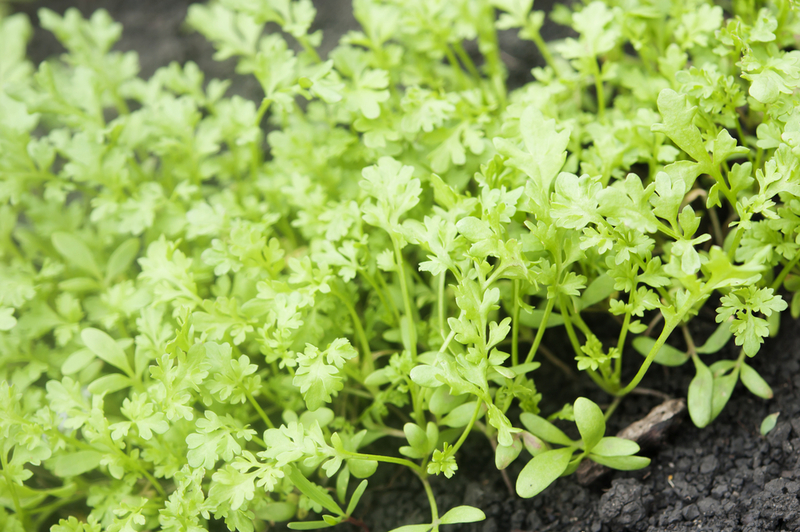
The main enemy of cabbage is butterflies and their larvae deposited between the leaves. These insects are repelled by mint, chamomile, wormwood, thyme, sage. The smell of fragrant herbs interrupts and masks the smell of ripening heads of cabbage, peculiar and attractive for cabbages. Cabbage is protected from earthen flea by various varieties of lettuce, and borage grass drives away voracious snails. But celery, although it repels earthen fleas, is itself an object of desire for cabbage whites - such a partnership is unlikely to be useful. The neighborhood of cabbage with onions, dill, potatoes, radishes is quite acceptable, and being next to tomatoes, carrots and green beans is undesirable.
A favorite and indispensable vegetable in the diet of most of the inhabitants of our country - potatoes perfectly coexists next to corn, eggplant, horseradish, garlic and white cabbage. These crops are multi-rooted and do not interfere with each other, absorbing the necessary trace elements and water from different soil layers. Coexistence with partner plants contributes to a high and stable yield of "second bread", reduces the risk of its disease. Moreover, with such a neighborhood, growing potatoes can not change the place for several years. 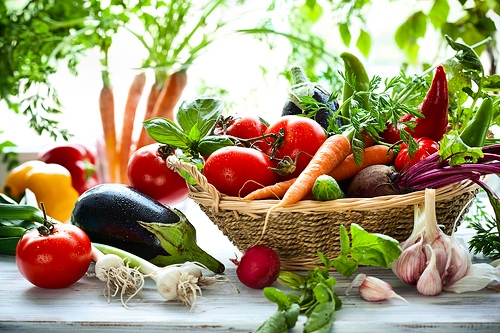 He loves potatoes (both on the table and in the beds) “green” environment - dill, garlic, onion, lettuce, spinach, as well as horseradish, radish, carrots and cabbage. Horseradish bushes, most often, are planted along the perimeter of the plot allotted for potatoes. Onions and garlic, releasing large amounts of antibacterial fintocides, protect against phytophthora.
He loves potatoes (both on the table and in the beds) “green” environment - dill, garlic, onion, lettuce, spinach, as well as horseradish, radish, carrots and cabbage. Horseradish bushes, most often, are planted along the perimeter of the plot allotted for potatoes. Onions and garlic, releasing large amounts of antibacterial fintocides, protect against phytophthora.
Beans planted between potato sprouts saturate the soil with nitrogen and protect the plant itself from bruchus. Bush beans protect plantings from the Colorado potato beetle. Therefore, tender eggplants grow well in her environment. Gardeners widely use the ability of beans to scare away the onion moth and often create a “hedge” from it around cucumber rows, cabbage and beets.
Tomatoes are inherently "donors", they bring more benefits to nearby plants than use other people's abilities. Substances secreted by tomato greens drive away the codling moth and prevent scab in fruit trees and have a positive effect on the growth of legumes, cabbage and onions.
However, the tomatoes themselves will benefit from the neighborhood with onions and garlic. These plants protect cucumbers and tomatoes well from bacterial infections, but onions do not like peas, beans, and beans. But it is combined with carrots (mutually protect each other from the fly), strawberries, lettuce, radishes and parsley.
The principle of "do no harm" in the garden
If some combinations of horticultural and vegetable crops complement each other, stimulating growth and protecting against pests, then other plants get along very poorly in close proximity and cause forced neighbors more harm than good.
So, legumes do not tolerate the neighborhood with Chipollino and his brethren very badly, and a flower bed with long-blooming marigolds will obviously not come in handy here.
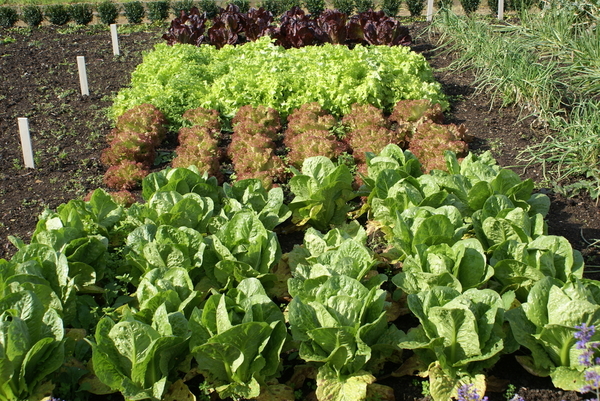 Walnut - an absolute egoist, suppresses any plant that has fallen into its "inner circle".
Walnut - an absolute egoist, suppresses any plant that has fallen into its "inner circle".
Oddly enough, but peas do not like the neighborhood with beans, and also negatively perceives the environment with tomatoes or rutabagas.
For cabbage, the neighborhood with carrots, parsley and tomatoes is undesirable. Ardent antagonists are cabbage and grapes, with such coexistence both cultures suffer. Aggressive against grapes and tomatoes, and he, in turn, suffers from cucumber, beets, fruit-bearing apple trees and cabbage (cauliflower, red and white).
Potatoes do not need the company of cucumbers and tomatoes, they do not tolerate pumpkin, celery and sunflowers (except for a decrease in yield, in this case there is a high risk of late blight infection). The tubers will not be large, and the harvest will be rich if you plant potatoes next to raspberry shoots and fruit trees, in particular apple and cherry trees.
It is better not to alternate gooseberry bushes and currant bushes and plant them away from each other. A disease such as gooseberry moth is easily transmitted between these plants. And the close proximity of strawberry plantations and raspberry thickets provokes the reproduction of colonies of the berry pest - the strawberry-raspberry weevil.
Fruit trees also do not all neighbor each other. Peach and apricot are best planted at the other end of the site, away from pears, apples and cherries.
Sea buckthorn, garden strawberries, eggplant, pepper, and tomato have similar infections. And their close location during planting provokes the emergence and mass spread of diseases inherent in these cultures.

